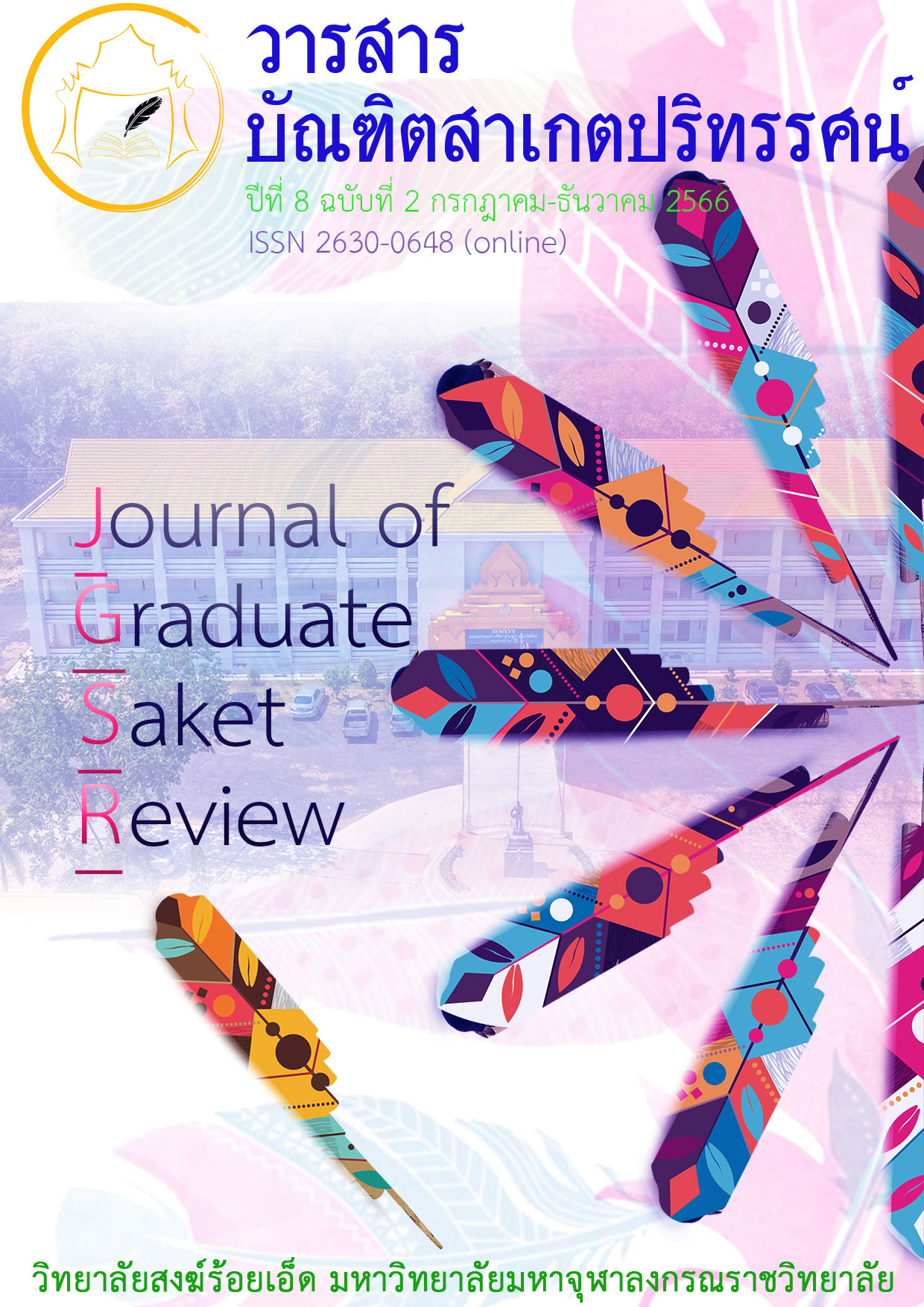An analysis of Dharma propagation of Phrabrahmmangkalajarn (Panyanantha Bhikkhu) according to empiricism in epistemology
Main Article Content
Abstract
The objectives of this research article were 1) to study the propagation of Dhamma in the Buddha’s time and now. 2) to study the life and works of propagating Dhamma of Phra Brahmamangalajarn. (Paññānanda Bhikkhu) and 3) to analyze the propagation of Dhamma by Phra Brahmamangalajarn. (Paññānanda Bhikkhu) according to the principle of empiricism in epistemology. This research is a qualitative research based on the study of the Tripitaka.
academic documents and related research using data analysis Then the research results are presented using descriptive analysis.
The research results found that:
1) The propagation of Buddhism during the Buddha’s time was mainly based on the “Mukkhapatha” method, focusing on propagating it for the benefit (hitāya), happiness (sukhāya), and compassion for the world. (Lokanukampai) This is because many people in the world or humans are still reborn in the cycle of samsara.
2) Study the life and work of propagating the Dhamma of Phra Brahmamangalajarn. (Paññānanda Bhikkhu) Phra Brahmamangalajarn or commonly known as Reverend Father Panyanantha Bhikkhu He was the pioneer of the Dhamma study center called Suan Mokkha. To be a place to study Dhamma from the main scriptures, namely the Tripitaka. Study Dhamma from the nature around you. He is known as a monk who reformed the way of spreading Buddhism among Thai monks. In particular, he was outstanding in giving sermons and preaching the Dhamma in public with valor. and he also has empirical work.
3) If empiricism is used to analyze the Dhamma propagation of Luang Pho Panyanantha Bhikkhu. It can be seen that his principles, methods and methods for propagating the Dhamma all stem from his experiences traveling for Buddhist Lent in various regions. There is Chiang Mai Province, for example. He changed from sitting on a pulpit to standing and lecturing on the podium in front of Buddhists. This method of propagating Dhamma is
consistent with empiricism. who believe that experience is the source of true and correct knowledge throughout the life of your monastic life.
Article Details

This work is licensed under a Creative Commons Attribution-NonCommercial-NoDerivatives 4.0 International License.
เนื้อหาและข้อมูลในบทความที่ลงตีพิมพ์ในวารสารบัณฑิตสาเกตปริทรรศน์ ถือเป็นข้อคิดเห็นและความรับผิดชอบของผู้เขียนบทความโดยตรงซึ่งกองบรรณาธิการวารสาร ไม่จำเป็นต้องเห็นด้วย หรือร่วมรับผิดชอบใด ๆบทความ ข้อมูล เนื้อหา รูปภาพ ฯลฯ ที่ได้รับการตีพิมพ์ในวารสารบัณฑิตสาเกตปริทรรศน์ ถือเป็นลิขสิทธิ์ของวารสารบัณฑิตสาเกตปริทรรศน์ หากบุคคลหรือหน่วยงานใดต้องการนำทั้งหมดหรือส่วนหนึ่งส่วนใดไปเผยแพร่ต่อหรือเพื่อกระทำการใด ๆ จะต้องได้รับอนุญาตเป็นลายลักอักษรจากวารสารบัณฑิตสาเกตปริทรรศน์ ก่อนเท่านั้น
References
ชลธิชา บำรุงรักษ์. (2539). การวิเคราะห์ภาษาระดับข้อความประเภทต่างๆ ในภาษาไทย. กรุงเทพ มหานคร: มหาวิทยาลัยธรรมศาสตร์.
มหามกุฎราชวิทยาลัย. (2525). พระไตรปิฎกฉบับพร้อมอรรกถา. กรุงเทพมหานคร: โรงพิมพ์มหามกุฎราชวิทยาลัย.
พระธรรมปิฎก (ป.อ. ปยุตฺโต). (2543). พุทธวิธีในการสอน. กรุงเทพมหานคร : โรงพิมพ์ ธรรมสภา.
ประพันธ์ เนตรนพรัตน์. (2523). อนุสรณ์งานพระราชทานเพลิงศพนายประพันธ์ เนตรนพรัตน์. กรุงเทพมหานคร: โรงพิมพ์สามเจริญพานิช.
สมทรง บุรุษพัฒน์. (2537). วจนะวิเคราะห์ : การวิเคราะห์ภาษาระดับข้อความ. กรุงเทพมหานคร: มหาวิทยาลัยมหิดล.
Bamrungrak C.. (1996). Language analysis at the level of various types of texts in the Thai language. Bangkok: Thammasat University.
Buruspat S.. (1994). Speech analysis: language analysis at the text level. Bangkok: Mahidol University.
Dhamma Pitaka (P.A. Payutto). (2000). Buddhist methods of teaching. Bangkok : Thammasapa Printing House.
Mahamakut Rajavidyalaya University. (1982). Tripitaka edition with commentary. Bangkok: Mahamakut Rajavidyalaya Printing House.
Netnopparat P.. (1980). Memorial for the Royal Cremation Ceremony of Mr. Praphan Netnopparat. Bangkok: Sam Charoen Panich Printing House.


